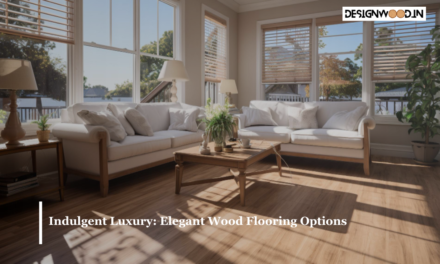As design trends evolve, the blending of traditional elements with contemporary materials has become increasingly popular. One striking example of this trend is the integration of wooden flooring with innovative materials to create a modern aesthetic that combines warmth, functionality, and style. Let’s explore how designers are pushing the boundaries of creativity by incorporating wood alongside new materials in interior design.
Harmonious Contrasts: Wood and Metal
The marriage of wood and metal is a classic combination that has stood the test of time. In modern design, this pairing is reimagined to create dynamic contrasts that add visual interest and depth to a space. Whether it’s sleek steel accents juxtaposed against rustic reclaimed wood or minimalist aluminum frames framing rich walnut panels, the fusion of wood and metal offers a harmonious balance between tradition and innovation.
Tech-Savvy Solutions: Wood and Glass
Advancements in technology have opened up new possibilities for incorporating glass into wood-based designs, creating seamless transitions between indoor and outdoor spaces. From floor-to-ceiling windows framed by natural oak to glass staircases set against a backdrop of dark walnut, the combination of wood and glass blurs the boundaries between the interior and exterior, allowing natural light to flood the space while highlighting the beauty of the wood.
Urban Chic: Wood and Concrete
Concrete may seem like an unlikely partner for wood, but this industrial material has found its place in modern design as a sleek and versatile counterpart to the warmth of wood. From polished concrete floors with inlaid wood accents to minimalist concrete countertops paired with live-edge timber shelves, the fusion of wood and concrete creates an urban chic aesthetic that exudes sophistication and style.
Innovative Textures: Wood and Resin
Resin has emerged as a popular choice for designers looking to add a contemporary twist to traditional wood surfaces. Whether it’s a live-edge table embedded with colorful resin accents or a polished epoxy resin floor overlaid with intricate wood patterns, the combination of wood and resin creates stunning visual effects that play with light, color, and wooden flooring texture, adding a touch of artistic flair to any space.
Sustainable Solutions: Wood and Recycled Materials
As sustainability becomes increasingly important in design, architects and designers are turning to recycled materials to create innovative and eco-friendly solutions. From reclaimed wood panels paired with recycled glass countertops to furniture crafted from salvaged metal and timber, the fusion of wood with recycled materials not only reduces environmental impact but also adds a unique and rustic charm to interior spaces.
Conclusion:
The blending of wood with new materials in modern design represents a bold departure from convention, challenging traditional notions of what constitutes a “natural” or “contemporary” aesthetic. By embracing innovative combinations and pushing the boundaries of creativity, designers can create spaces that are both visually striking and functionally efficient. Whether it’s the contrast of wood and metal, the fusion of wood and glass, or the interplay of wood and resin, the possibilities for blending traditional and modern elements are endless. So dare to experiment, embrace the unexpected, and let your imagination soar as you explore the exciting world of modern design fusion.





